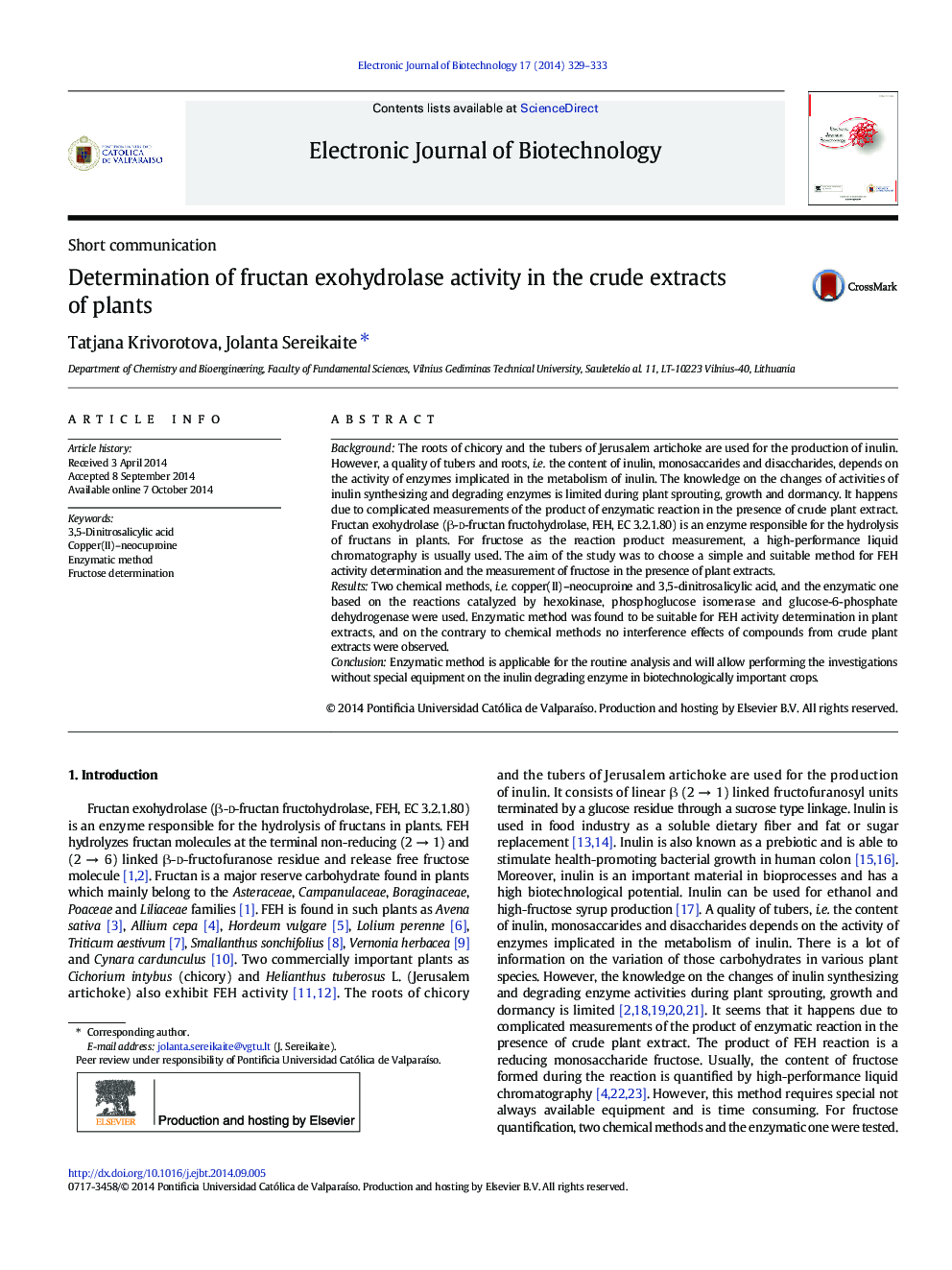| Article ID | Journal | Published Year | Pages | File Type |
|---|---|---|---|---|
| 200572 | Electronic Journal of Biotechnology | 2014 | 5 Pages |
BackgroundThe roots of chicory and the tubers of Jerusalem artichoke are used for the production of inulin. However, a quality of tubers and roots, i.e. the content of inulin, monosaccarides and disaccharides, depends on the activity of enzymes implicated in the metabolism of inulin. The knowledge on the changes of activities of inulin synthesizing and degrading enzymes is limited during plant sprouting, growth and dormancy. It happens due to complicated measurements of the product of enzymatic reaction in the presence of crude plant extract. Fructan exohydrolase (β-d-fructan fructohydrolase, FEH, EC 3.2.1.80) is an enzyme responsible for the hydrolysis of fructans in plants. For fructose as the reaction product measurement, a high-performance liquid chromatography is usually used. The aim of the study was to choose a simple and suitable method for FEH activity determination and the measurement of fructose in the presence of plant extracts.ResultsTwo chemical methods, i.e. copper(II)–neocuproine and 3,5-dinitrosalicylic acid, and the enzymatic one based on the reactions catalyzed by hexokinase, phosphoglucose isomerase and glucose-6-phosphate dehydrogenase were used. Enzymatic method was found to be suitable for FEH activity determination in plant extracts, and on the contrary to chemical methods no interference effects of compounds from crude plant extracts were observed.ConclusionEnzymatic method is applicable for the routine analysis and will allow performing the investigations without special equipment on the inulin degrading enzyme in biotechnologically important crops.
